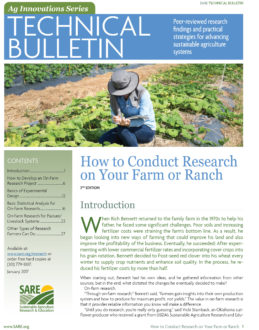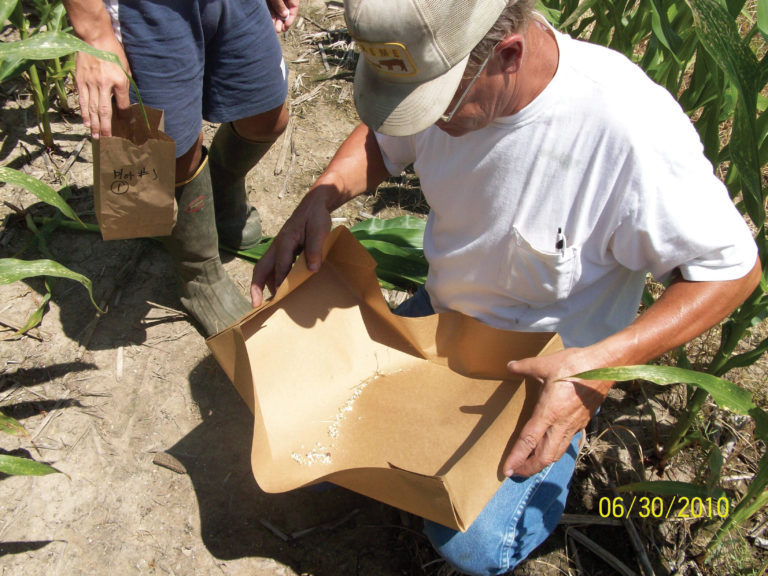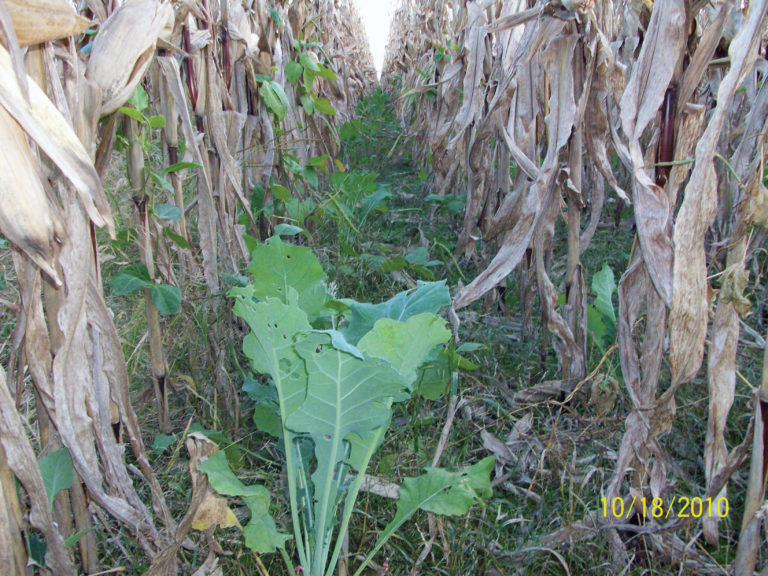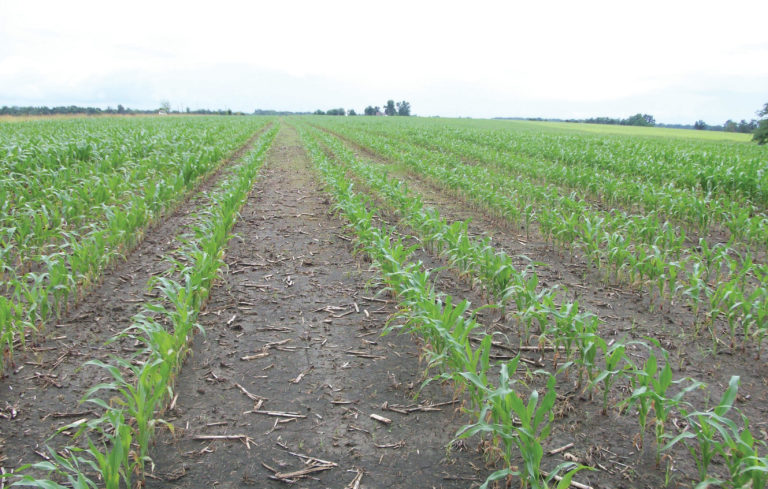Skip-Row Corn Planting Techniques with Cover Crops for Sustainable Grazing
Harry Cope is one of a growing number of farmers nationwide using cover crops to improve soil quality and enhance their production system. He farms 1,300 acres near Truxton, Mo., where he raises cattle, sheep and goats. Cope uses management intensive grazing (MIG) on all his pasture land, and has about 115 acres in crop production. As part of his pasture rotation, livestock graze corn in the fall. This has worked well, but Cope wondered if the amount of forage available to livestock could be increased by planting a cover crop into the standing corn in July or August. Very little direct sunlight can reach the soil surface in a standing corn crop at that time of the season, so that presented Cope with a challenge: how to maintain the period that livestock have to graze the corn forage, and at the same time give a cover crop the growing conditions it needs to become established and grow well. An earlier-emerging and more robust cover crop could result in greater forage mass, higher-quality forage and lower grazing costs for sheep and cattle.
Research Questions/Objectives
Cope’s idea was to skip some rows when planting corn so that he could plant the cover crop mix directly into the standing corn crop. With skip-row corn planting, enough light would reach the soil surface to promote cover crop germination and establishment. Skip-rows would also make it easier to set up the portable electric fencing required for his MIG systems. With that general idea in mind, Cope arrived at the following research question: What is the most productive combination of corn population, skip-row planting techniques and cover crops seeded into standing corn for increasing dry matter yield for fall grazing by sheep? “Productive” in this context meant maximizing both corn dry matter (vegetation) and cover crop growth as part of the total feed available to the livestock.
Experimental Design
In order to answer his research question, Cope conducted a three-year study. Using a randomized complete block design, he laid out five replications (blocks) in a 15-acre field. Each replication consisted of four treatments, and each of the 20 plots was 0.75 acres. Treatments were randomized within each block and the experimental design remained the same during the three years of the project. The four treatments for planting corn were as follows:
- Solid stand 26: six rows of a six-row planter with 26,000 population
- Solid stand 20: six rows of six-row planter with 20,000 population
- Skip-row 26: rows one, three, four and six of six-row planter with 26,000 population, rows two and five bare
- Skip-row 32: rows one, three, four and six of six-row planter with 32,000 population, rows two and five bare
In each year of the study, the corn was planted at the same time for all plots and managed consistently throughout the growing season. A mixture of different cover crops (peas, kale, annual ryegrass, oats, Daikon radish and cereal rye) was broadcast into the standing corn crop as it attained its final vegetative growth stage (about 10 leaves to tasseling). The corn and cover crops were harvested in the fall, and Cope collected data on corn grain yield, corn biomass production and cover crop biomass production.
A portion of the corn and cover crop plots was harvested in September. Cope conducted a separate grazing study on the non-harvest area of plots to see how lambs would do grazing corn. (He already knew that beef cattle and ewes could graze corn successfully.) Three groups of lambs were tagged, weighed and placed in three grazing treatments: 1) corn, cover crops and hay, 2) pasture, free access to corn and cover crops, and 3) pasture only, as a control. The grazing trial ran 47 days, and at the end, lambs were weighed again to determine weight gain.
Statistical Analysis and Findings
Overall, Cope’s project provided him with information that helped him refine his ideas about using cover crops in standing corn for early fall grazing.
Data from the corn-cover crop plots was analyzed using ANOVA. The results showed that cover crops can be planted into standing corn during July and early August, but it was not clear which corn planting density was optimum. There were differences among the treatments, but according to the statistics, those differences were not significant due to substantial rainfall differences in July-August-September time frame during the three-year time frame. By keeping accurate field notes over each growing season, Cope noted that the hybrid kale, annual ryegrass, oats, field peas and crimson clover all did well under this planting scenario; the radish and cereal rye had difficulty becoming established.
Based on his experience with this project, Cope concluded that he could not really count on cover crops to increase the dry matter in standing corn for early fall grazing. With the type of soil on his farm (primarily a silt loam), cover crops for grazing are only successful if there is enough rain at the right frequency to get the cover crop up and growing. With that added uncertainty, more research is needed to determine if this strategy is worth pursuing.
Statistical analysis for the grazing portion of the study used ANOVA in the first year and an independent t-test in the second year to determine any significance differences in weight gain between the three groups of lambs. The data showed that lambs are not able to figure out how to make use of corn to meet their nutritional needs. A few individual animals gained weight with the corn forage treatments, but as a group, the lambs did not show significant gains with corn. Based on these results, Cope concluded that mature dry corn does not fit the grazing need in October-December for feeder lambs, and the dry matter per acre of seeding cover crops into standing corn was not great enough to compensate for the lambs not knowing how to feed on ear corn or dry leaves. Ewes or beef cattle would be better suited to graze standing corn with cover crops in this time period.
Project Team
Cope had assistance from Rich Hoormann, Charles Ellis and Wayne Shannon, all with University of Missouri Extension, on this project.
To learn more about this project, including an analysis of the data, visit SARE's project reports database and see project FNC10-817.
Visit Harry Cope's multimedia page for a story about Cope’s project, including video of a presentation he gave in 2012.



